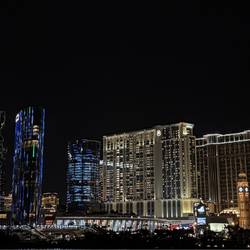Navigating Singapore's Roads Smarter: All You Need to Know About ERP

Navigating Singapore's Roads Smarter: All You Need to Know About ERP
Singapore’s bustling city life comes with an undeniable reality—road congestion. Managing traffic on the nation’s limited road space can be an ongoing challenge for commuters trying to efficiently get from point A to B. Enter Electronic Road Pricing (ERP), Singapore's revolutionary solution to congestion, which forever changed how we think about urban transport.
ERP isn't just a toll collection system; it's a cutting-edge traffic management technology that has evolved alongside the city-state's commitment to sustainability, efficiency, and innovation. Whether you're a daily commuter, a tech enthusiast, or someone trying to understand the nuances of urban planning, this blog takes a deep dive into ERP's history, functionality, and impact. By the end, you'll have practical tips to make your road journeys smoother and save money.
What Is Electronic Road Pricing (ERP)?
At its core, ERP is Singapore’s congestion management system designed to regulate traffic flow by charging vehicles to access specific roads. Using technology, ERP automatically deducts charges via cash cards inserted into in-vehicle units (IUs) as vehicles pass under automated gantries. These gantries are strategically placed in high-traffic areas, with fees adjusted based on time, location, and vehicle type.
The goal? Discourage vehicular congestion during peak times, promote efficient road usage, and encourage greater reliance on public transport systems. For a city as space-constrained as Singapore, ERP has become a crucial tool in maintaining traffic balance and ensuring commuters' mobility.
The Journey of ERP in Singapore
ERP was first introduced in 1998, but the concept of road pricing stretches back even further. Before ERP, Singapore implemented Area Licensing Schemes (ALS) in the 1970s to manage traffic access to the central business district.
The leap from paper-based ALS systems to the sophisticated ERP marked a significant milestone. Over time, ERP expanded nationwide, with gantries cropping up in additional high-demand areas. Technological advancements, such as GPS developments, have since influenced how Singapore collects and analyses traffic data, paving the way for what’s next in ERP innovation.
How ERP Works Today
The ERP operates at specific times when road usage is at its highest, think weekday mornings, evenings, and selected weekends for particular locations. Charges are based on the following factors:
For instance, entering the Marina Bay area during peak hours can cost between S$2.50 and S$4 per gantry, depending on your timing and vehicle type. Planning your route carefully can help you avoid higher charges.
ERP’s Impact: Traffic Congestion, Air Quality, and Public Transport
ERP has proven to reduce bottlenecks significantly. Strategically raising costs during peak times deters non-essential vehicles from overcrowding significant roads. Data highlights that traffic speeds have improved noticeably—ideal for commuters juggling tight schedules.
Another critical benefit is reduced car emissions, as fewer idle vehicles translate to better air quality. With Singapore’s robust public transport and cycling initiatives, ERP supports broader sustainability goals. Encouraging commuters to opt for MRTs, buses, or carpools is helping pave the way for a greener future.
What Do Singaporean Commuters Think About ERP?
Like all policy measures, ERP garners both praise and criticism.
What commuters like:
Common concerns:
Overall satisfaction depends on how well individuals manage their commuting habits around ERP charges.
The Future of ERP in Singapore
Singapore’s next frontier in congestion management is a satellite-based ERP system. Unlike gantry-based ERP, this upgrade aims to track vehicles using GPS, eliminating the need for physical gantries and offering more dynamic pricing based on kilometres travelled instead of static locations.
Additionally, policies focusing on improving user experience, such as in-app road-use analytics and real-time traffic data, could ease commuter frustrations. These advancements reflect Singapore’s dedication to staying ahead in urban innovation while addressing population growth concerns.
How Singapore’s ERP Compares Globally
Singapore is not alone in adopting road pricing as a traffic management tool. Cities like London and Stockholm have implemented their versions with varying degrees of success.
While both cities rely on manual camera enforcement, Singapore’s fully automated ERP system is unique in its integration with an efficient public transport network. However, Singapore can draw lessons from Stockholm's focus on public feedback mechanisms to enhance user satisfaction.
Practical Tips for Singaporean Commuters
Navigating ERP doesn’t have to be stressful or overly costly. Here are some tips to optimise your approach:
Implementing these hacks gives you a more efficient, cost-effective commute.
ERP’s Place in Your Daily Commute
Electronic Road Pricing is more than just a toll system; it’s a testament to Singapore's forward-thinking approach to urban living. From clearing road congestion to fostering sustainability, ERP plays a vital role in shaping the city’s present and future.
Understanding ERP’s workings, impacts, and potential upgrades empowers commuters and ensures the best travel experience. Whether you’re looking to reduce costs or explore other transport alternatives, the knowledge shared in this guide is helpful for everyone.
Visit Traveloka today for more city travel tips and seamless booking solutions for flights, hotels, and experiences. Travel smarter, live wiser.
Tags:
erp singapore
Recommended Articles

Traveloka New Year Escape: Christmas Sale & New Year Promo for Singaporeans

New Year in Bali 2025: Best NYE Parties, Fireworks & Beach Clubs

Guide to Top Shanghai Christmas Market | Where & What to Buy

Japan New Year 2026: Tokyo Fireworks, Traditions & Countdown Events

Macau: The Ultimate 4D3N Macao Itinerary

Trick or Treat! Best Neighbourhoods, Events & Tips in Singapore 2025


















 Facebook
Facebook Instagram
Instagram TikTok
TikTok Youtube
Youtube Telegram
Telegram
